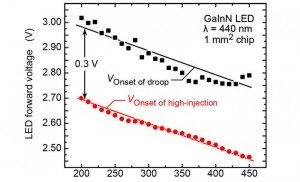Sea-level rise drives shoreline retreat in Hawaii
The authors of the work point out that knowing that SLR is a primary cause of shoreline change on a regional scale allows managers and other coastal zone decision-makers to target SLR impacts in their research programs and long-term planning. This study is confirmation that future SLR is a major concern for decision-makers charged with managing beaches.
"It is common knowledge among coastal scientists that sea level rise leads to shoreline recession," stated Dr. Brad Romine, coastal geologist with the University of Hawaii Sea Grant College Program. "Shorelines find an equilibrium position that is a balance between sediment availability and rising ocean levels. On an individual beach with adequate sediment availability, beach processes may not reflect the impact of SLR. With this research we confirm the importance of SLR as a primary driver of shoreline change on a regional to island-wide basis."
Globally-averaged sea-level rose at about 2 mm per year over the past century. Previous studies indicate that the rate of rise is now approximately 3 mm per year and may accelerate over coming decades. The results of the recent publication show that SLR is an important factor in historical shoreline change in Hawaii and will be increasingly important with projected SLR acceleration in this century. "Improved understanding of the influence of SLR on historical shoreline trends will aid in forecasting beach changes with increasing SLR," said Dr. Charles Fletcher, Associate Dean and Professor of Geology and Geophysics at the UHM SOEST.
"The research being conducted by SOEST provides us with an opportunity to anticipate SLR effects on coastal areas, including Hawaii's world famous beaches, coastal communities, and infrastructure. We hope this information will inform long range planning decisions and allow for the development of SLR adaptation plans," said Sam Lemmo, Administrator, Department of Land and natural Resources, Office of Conservation and Coastal Lands.
Results of island-wide historical trends indicate that Maui beaches are significantly more erosional than beaches on Oahu. On Maui, 78% of beaches eroded over the past century with an overall (island-wide) average shoreline change rate of 13 cm of erosion per year, while 52% of Oahu beaches eroded with an overall average shoreline change rate of 3 cm of erosion per year.
The variation in long-term relative SLR rates along the Hawaii archipelago is due, in large part, to variations in island subsidence with distance from actively growing Hawaii Island and/or variations in upper ocean water masses. The islands of Oahu and Maui, Hawaii, with significantly different rates of localized sea-level rise (SLR has been approximately 65% higher rate on Maui) over the past century, provided a natural laboratory to investigate possible relations between historical shoreline changes and SLR.
Island-wide and regional historical shoreline trends were calculated for the islands using shoreline positions measured from aerial photographs and survey charts. Shoreline positions were manually digitized using photogrammetric and geographic information system (GIS) software from aerial photo mosaics and topographic and hydrographic survey charts provided by the National Ocean Service (NOS). Shoreline movement through time was measured using GIS software. Historical shoreline data were optimized to reduce anthropogenic influences (e.g., constructing seawalls or sand mining) on shoreline change measurements. The researchers controlled for influences other than SLR to determine if SLR remains as the best explanation for observed changes. They also utilized a series of consistency checks to determine if results are significant and to eliminate other possible explanations.
Welcome to SUV System Ltd!
SUV System Ltd is ISO 90012008 Certified electronics distributor with 10 years of experiences.
We have built up long term business relationship with about many companies which are stockers and authorized agents. we have a steady and reliable supply to meet customer's demands to the greatest extent .Confidently, we are able to lower your cost and support your business with our years of professional service.
SUV System Ltd is Electronic Components Distributor Supplies,Find Quality Electronic Components Supplies Products IC(Integrated Circuits),Connectors,Capacitor,Resistors,Diodes,Transistors,LED at Suvsystem.com. Sourcing Other Energy, Environment, Excess Inventory Products from Manufacturers and Suppliers at Suvsystem.com
Electronic Components distributor:http://www.suvsystem.com
Connectors Distributor:http://www.suvsystem.com/l/Connectors-1.html
IC Distributor:http://www.suvsystem.com/l/IC(Integrated-Circuits)-1.html
LED Distributor:http://www.suvsystem.com/l/LED-1.html
Capacitor Distributor:http://www.suvsystem.com/l/Capacitor-1.html
Transistor Distributor:http://www.suvsystem.com/l/Transistors-1.html
Resistor Distributor:http://www.suvsystem.com/l/Resistors-1.html
Diode Distributor:http://www.suvsystem.com/l/Diodes-1.html
SUV System Ltd insists on the managing faith ofsincereness,speciality,foresight, win-win,so we build up stable-relationship customers located all over the world, including the States, Europe, Argentina, UAE, Malaysia, Australia,and India etc
we are focus on the following fields,and hope we can help you.
Resistor Networks TDK IC Digital Transistors chip Filter saws IDT IC Chip Inductors Rectifier Diodes NEC Diodes Microchip IC Electronic News Multi-units Transistors IR transistor Civil IC Atmel IC FAIRCHILD diodes Ligitek LED Chip Fuses TI IC ROHM Resistors Xilinx IC Voltage Regulators Transistors Schottky Diodes Switches Diodes Inc Fleld Effect Transistors IC(Integrated Circuits) LINEAR IC BB IC HARRIS IC ON Transistors ST Transistors INTERSIL IC Low Ohmic Resistors ON Diodes ALTERA IC Freescale Semiconductor MURATA IC Fast Recovery Diodes LITTELFUSE Diodes Infineon Technologies Transistors
http://www.suvsystem.com/a/5421.aspx
 Researchers at the US Rensselaer Polytechnic have proven a link between LED efficiency drop at high current and carrier mobility. Better lighting LEDs could result.
Researchers at the US Rensselaer Polytechnic have proven a link between LED efficiency drop at high current and carrier mobility. Better lighting LEDs could result.